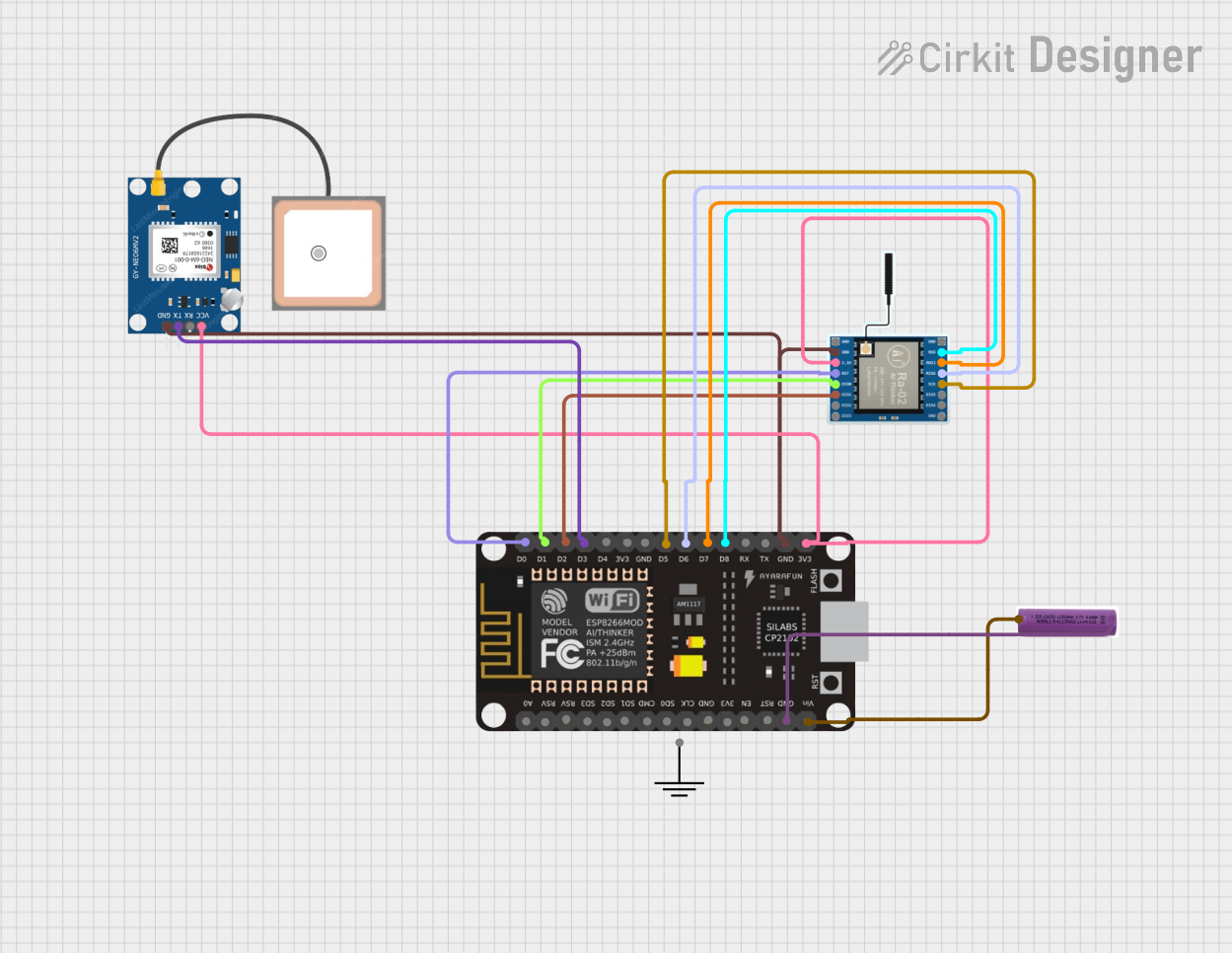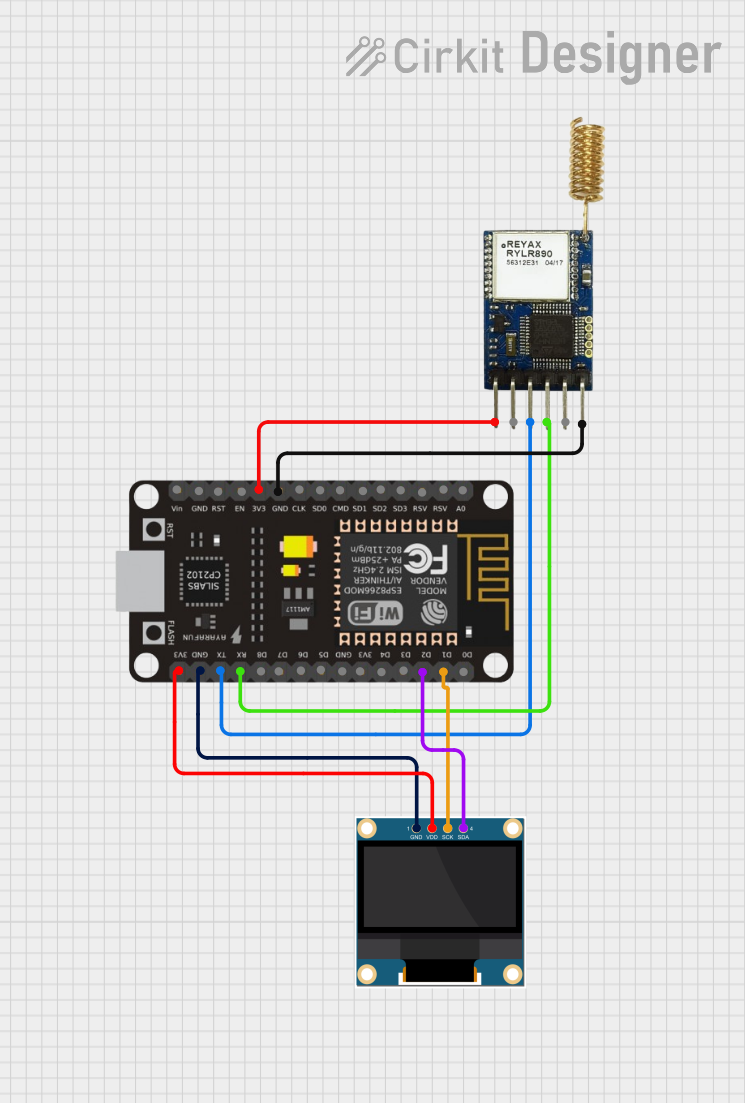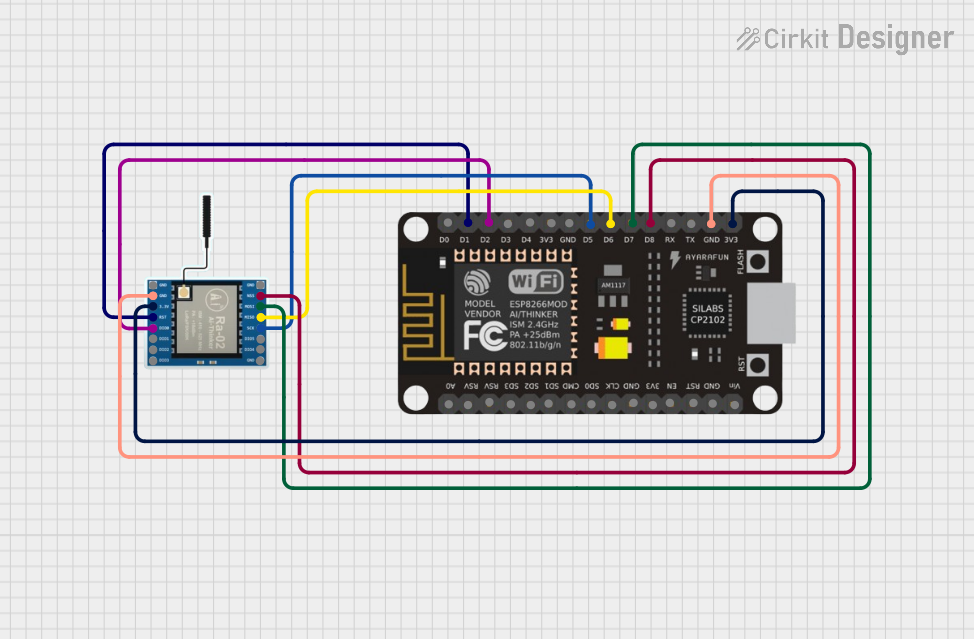
How to Use M5Stack LoRaWAN 868: Examples, Pinouts, and Specs

 Design with M5Stack LoRaWAN 868 in Cirkit Designer
Design with M5Stack LoRaWAN 868 in Cirkit DesignerIntroduction
The M5Stack LoRaWAN 868 is a compact development board that integrates a LoRaWAN module designed for long-range wireless communication within the 868 MHz frequency band. This board is ideal for IoT applications requiring low power consumption and long-range data transmission capabilities, such as smart agriculture, environmental monitoring, and smart city infrastructure.
Explore Projects Built with M5Stack LoRaWAN 868

 Open Project in Cirkit Designer
Open Project in Cirkit Designer
 Open Project in Cirkit Designer
Open Project in Cirkit Designer
 Open Project in Cirkit Designer
Open Project in Cirkit Designer
 Open Project in Cirkit Designer
Open Project in Cirkit DesignerExplore Projects Built with M5Stack LoRaWAN 868

 Open Project in Cirkit Designer
Open Project in Cirkit Designer
 Open Project in Cirkit Designer
Open Project in Cirkit Designer
 Open Project in Cirkit Designer
Open Project in Cirkit Designer
 Open Project in Cirkit Designer
Open Project in Cirkit DesignerCommon Applications and Use Cases
- Remote sensor data collection
- Smart agriculture and livestock tracking
- Environmental monitoring
- Smart metering and utilities management
- Asset tracking and logistics
Technical Specifications
Key Technical Details
- Frequency Band: 868 MHz (suitable for EU regions)
- LoRaWAN Version: Compatible with LoRaWAN 1.0.2
- Operating Voltage: 3.3V to 5V
- Transmit Power: Up to +14 dBm
- Sensitivity: Down to -137 dBm
- Range: Up to 10 km (line-of-sight conditions)
- Interfaces: UART, GPIO, I2C, SPI
- Antenna: U.FL connector for external antenna
Pin Configuration and Descriptions
| Pin Number | Name | Description |
|---|---|---|
| 1 | GND | Ground connection |
| 2 | 5V | 5V power supply input |
| 3 | TX | UART transmit |
| 4 | RX | UART receive |
| 5 | SCL | I2C clock |
| 6 | SDA | I2C data |
| 7 | GPIO | General-purpose input/output |
| 8 | RST | Reset pin |
| 9 | NC | Not connected/used |
Usage Instructions
How to Use the Component in a Circuit
- Power Supply: Connect the 5V pin to a 5V power source and GND to the ground.
- Antenna: Attach an appropriate 868 MHz antenna to the U.FL connector.
- Communication: Connect the TX and RX pins to the corresponding RX and TX pins of your microcontroller or another UART interface.
- Programming: Use the provided libraries and API to program the device for LoRaWAN communication.
Important Considerations and Best Practices
- Ensure that the antenna is properly connected and suited for the 868 MHz band.
- Use a stable power source to prevent communication errors.
- Follow regional regulations regarding the use of the 868 MHz frequency band.
- Implement proper error handling in your code to manage communication retries and message acknowledgment.
Troubleshooting and FAQs
Common Issues Users Might Face
- No Communication: Check the UART connections and ensure the correct baud rate is set.
- Low Range: Verify the antenna placement and orientation. Avoid obstacles that could interfere with signal propagation.
- Joining Network Failure: Ensure that the LoRaWAN keys and device EUI are correctly configured.
Solutions and Tips for Troubleshooting
- Double-check wiring and solder joints for any loose connections.
- Use a logic analyzer or oscilloscope to verify UART signals.
- Test the module with a known working setup to isolate the issue.
FAQs
Q: Can I use the M5Stack LoRaWAN 868 outside of Europe? A: The 868 MHz band is primarily for EU regions. Check local regulations for the appropriate frequency band in your area.
Q: How do I configure the device for my LoRaWAN network? A: Use the provided software libraries and follow the network provider's guidelines to configure the device.
Q: What is the maximum power consumption of the module? A: The module consumes up to 120 mA during transmission, depending on the transmit power setting.
Example Code for Arduino UNO
#include <LoRaWan.h> // Include the LoRaWAN library specific to the module
// Define the pins
#define LORA_TX 3
#define LORA_RX 2
// Initialize the LoRaWAN module
LoRaWan lora = LoRaWan(LORA_TX, LORA_RX);
void setup() {
Serial.begin(9600); // Start the serial communication
lora.begin(868E6); // Initialize LoRaWAN at 868 MHz
// Set device keys and join the network (OTAA or ABP)
lora.setDeviceEUI("YOUR_DEVICE_EUI");
lora.setAppEUI("YOUR_APP_EUI");
lora.setAppKey("YOUR_APP_KEY");
lora.join();
}
void loop() {
// Check if joined to the network
if (lora.isJoined()) {
// Prepare the payload
byte payload[] = "Hello, LoRa!";
// Send the payload
lora.sendPacket(payload, sizeof(payload));
}
// Wait for a short period before sending the next packet
delay(10000);
}
Note: The above code is a simplified example to demonstrate basic LoRaWAN communication with an Arduino UNO. You will need to replace "YOUR_DEVICE_EUI", "YOUR_APP_EUI", and "YOUR_APP_KEY" with your actual LoRaWAN network credentials. Additionally, ensure that you have the correct library installed for your specific LoRaWAN module.